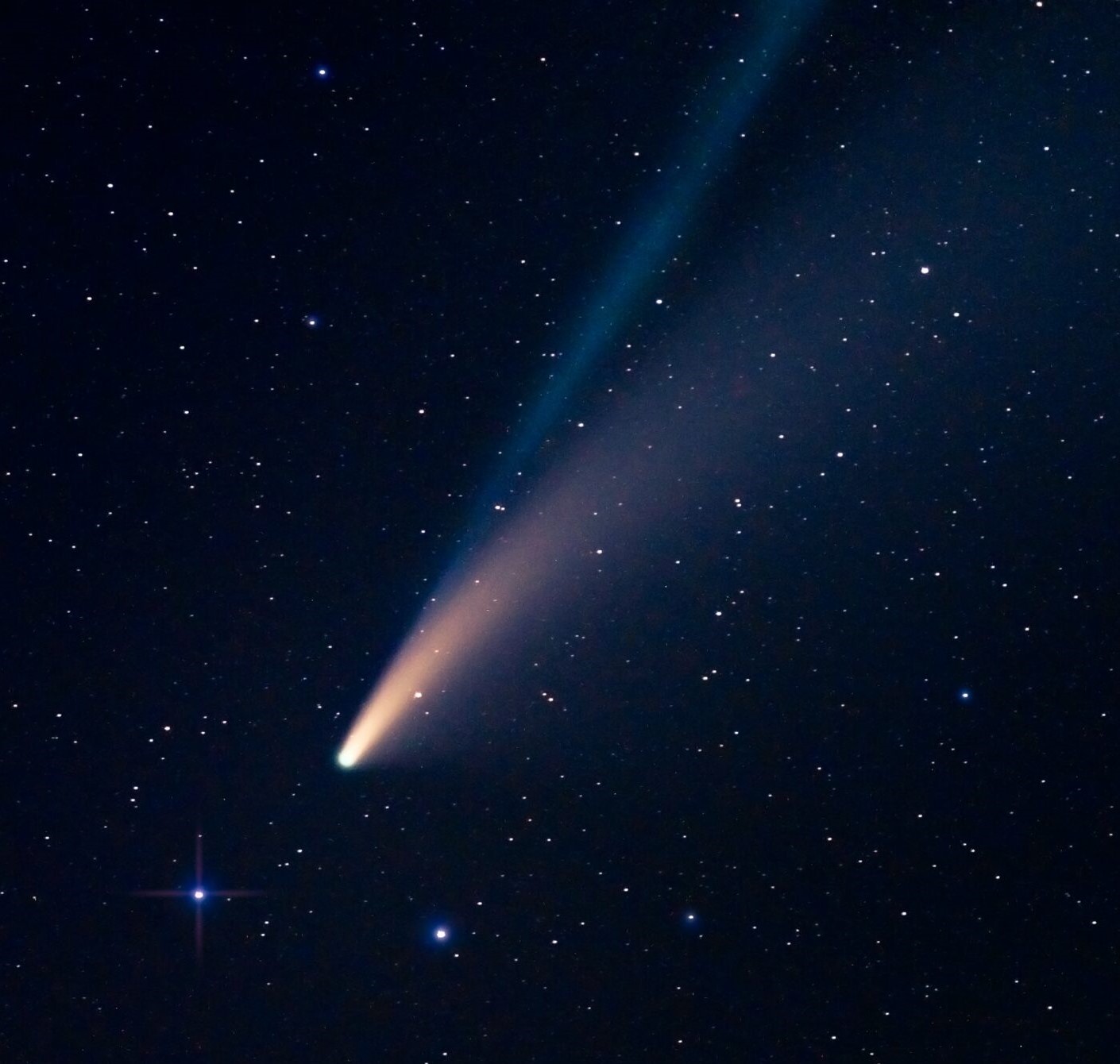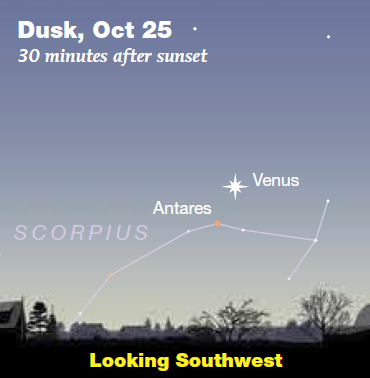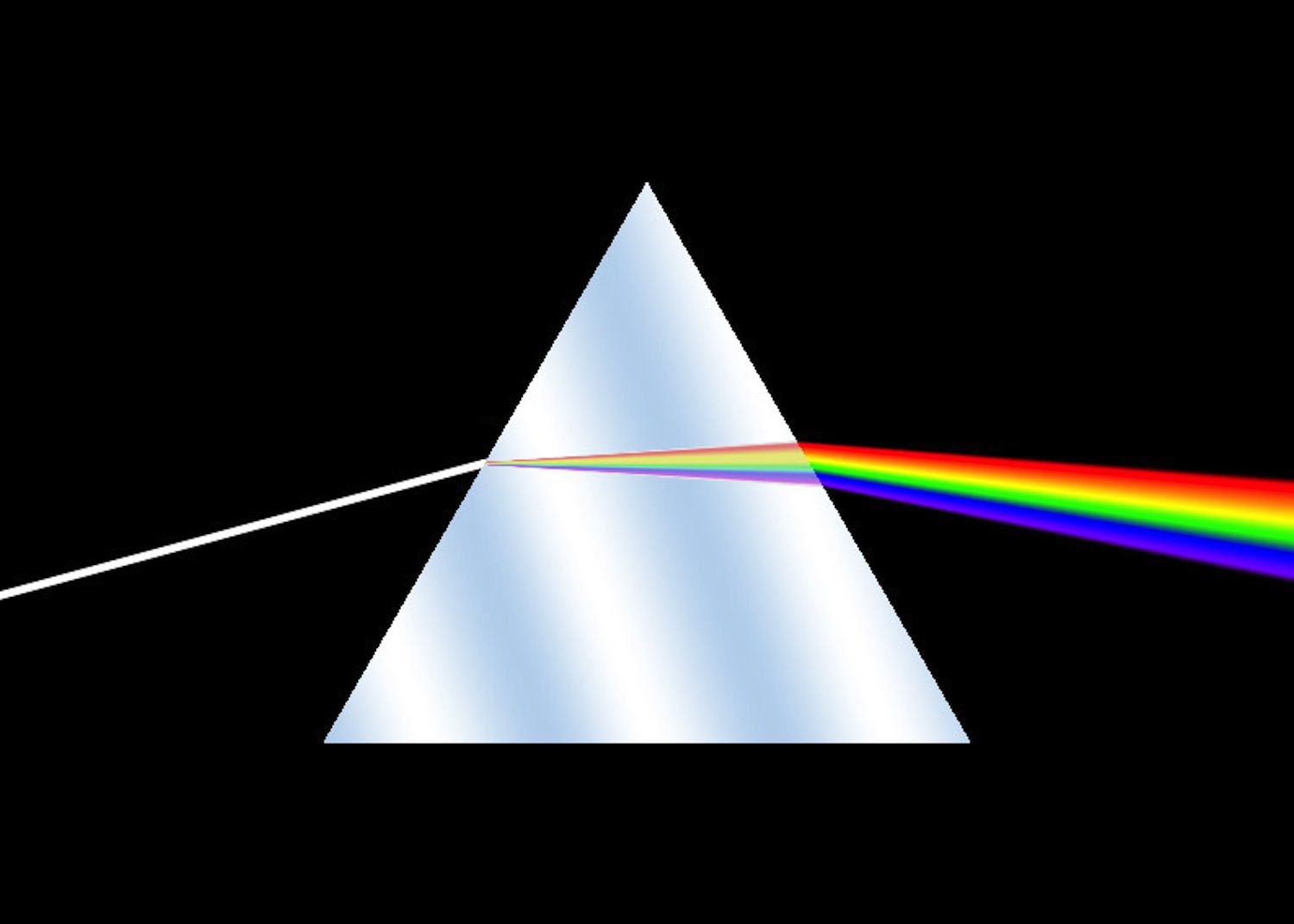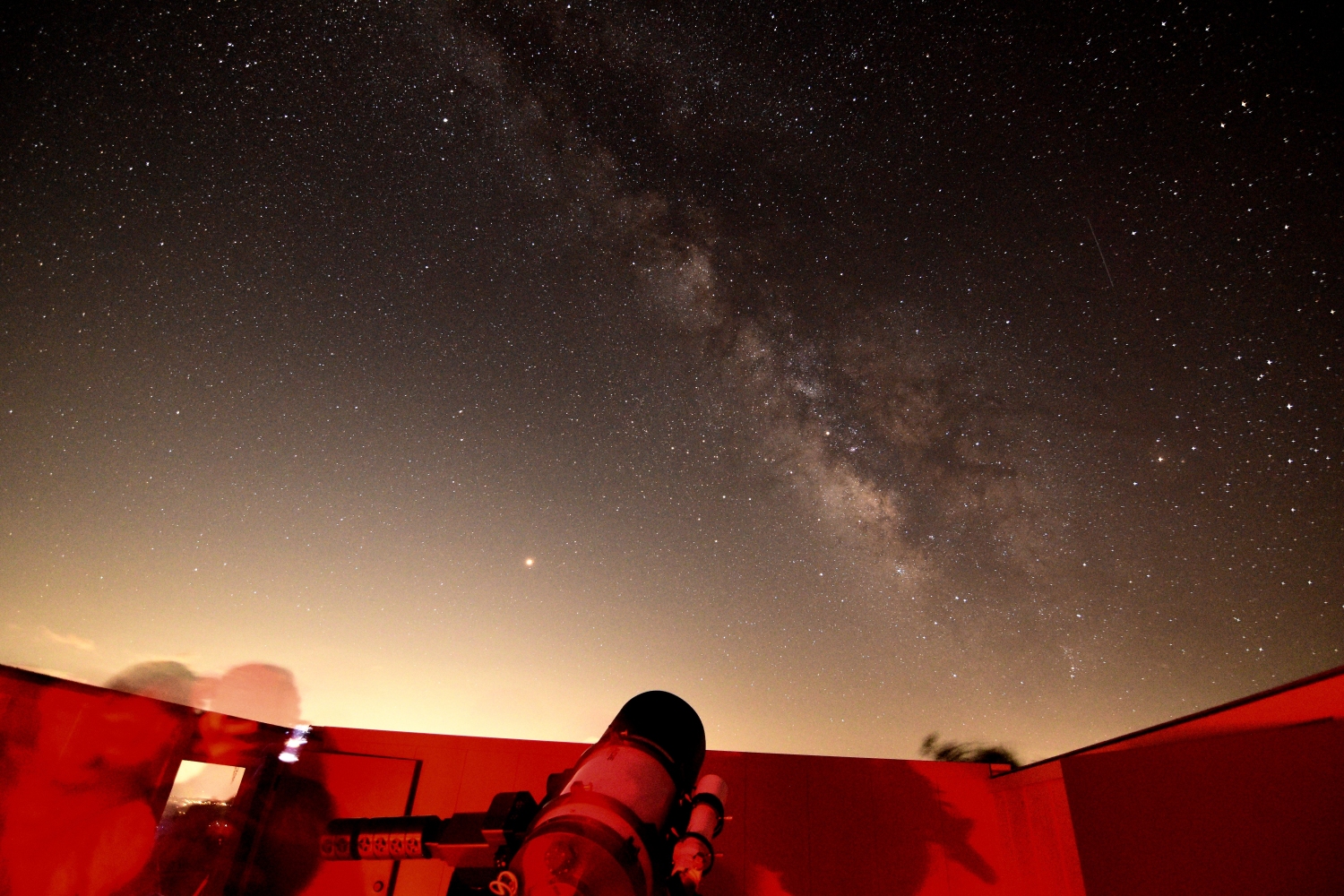 12-31 Oct. 2024
12-31 Oct. 2024
– Comet Tsuchinshan-ATLAS Soars at Dusk
Next Public Star Gaze
Continue to check this home page as weather could change the venue or postpone and possibly cancel a star gaze. Check again after 5:00 p.m. on the afternoon of the observing session for the latest info and update.
Star gaze venue change: Hurricane Helene has disrupted our ability to conduct a star gaze on the university campus in October. Therefore, the October 25th star gaze has been rescheduled from Lookout Observatory to Grassland Mtn. Observatory.
25 Oct. 2024 — Friday night — This public star gaze will be held at Grassland Mountain Observatory in Madison County, with a weather backup night of Saturday, 26 October. This event is free and open to everyone — registration is not necessary to attend. A temporary gate code, required for entry, will be provided here on the day of the star gaze by 4:00 p.m. Directions to Grassland Mountain Observatory can be found here. These star gazes normally conclude about 3 hours after sunset, and visitors are not permitted to stay past the conclusion time. Sunset occurs at 6:41 p.m.
 25 Oct. 2024
25 Oct. 2024
– Venus Passes Over the Bright Star Antares
Illustration courtesy of
SKY & TELESCOPE
 3 Nov. 2024
3 Nov. 2024
– Daylight Saving Time Ends
7 Nov. 2024 – Club Meeting Presentation
— Thursday night, 7:00 – 8:30 p.m.
This free speaker presentation will be offered in-person at the UNC-Asheville Reuter Center and virtually online. Registration is not required; use this Zoom link to watch the presentation remotely.
Although parking for this meeting at the Reuter Center is free, you must register your vehicle with a “visitor daily” permit at this link.
 Spectroscopy
Spectroscopy
– presented by Timothy DeLisle,
Director of Software & Engineering at Pisgah Astronomical Research Institute
Spectroscopy is the study of light and what we can learn from it. Concepts like color, wavelength, frequency, and photon energy will all make sense once you understand the spectrum. Learn about where light comes from and how it can change depending on what emits it, and what it interacts with on its way to us. An investigation of light can reveal the composition, movement, and temperature of anything, whether in the distant reaches of the universe, or directly in front of us. Read more…


